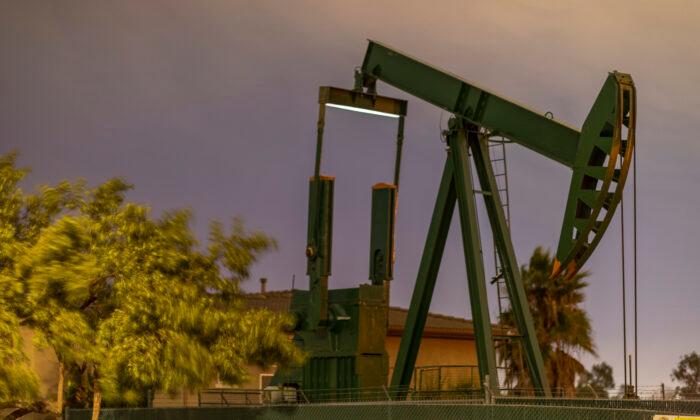While oil prices continue their decline amid the Russia-Saudi price war and weakening demand due to government measures to mitigate the spread of the novel coronavirus, the blow to the U.S. oil market has been cushioned by President Donald Trump’s announcement that the U.S. will buy tens of millions of barrels of crude for its strategic reserves.
Brent Crude, the leading index for world oil prices, has dropped by about 12.3 percent since March 13, and more than 57 percent since early January. Meanwhile, the domestic oil price index, WTI Crude, has fallen less than 9.5 percent since March 13 and less than 55 percent since January.
“The relative weakness in Brent shouldn’t come as too much of a surprise, given the severity of the breakout across Europe,” ING analyst Warren Patterson says. “Another factor offering relatively more support to WTI is news that President Trump has ordered Strategic Petroleum Reserves to be filled up at these lower price levels.”
Trump said March 13 that the United States would take advantage of low oil prices and fill the nation’s Strategic Petroleum Reserve (SPR), in a move aimed to help energy producers struggling from the price plunge.
The federal government keeps hundreds of millions of barrels of crude oil in artificial salt dome caverns along the coast in Louisiana and Texas.
Trump has been selling part of the reserves, letting them drop to less than 635 million in December 2019 from 695 million barrels in January 2017. The sell-off somewhat mitigated price increases caused by Trump’s imposing sanctions on Iran, a notable oil producer, and more recently by production cuts agreed upon by Russia and the Saudi-led Organization of the Petroleum Exporting Countries (OPEC).
Fed Intervention Falls Flat
The Federal Reserve on March 15 cut its key rate to near zero, followed by similar moves by other central banks. However, the measures failed to calm investors, and stock markets weakened again.“The price response is understandable given that lower interest rates and new bond purchasing programs will do nothing to combat the current weakness of oil demand,” Commerzbank analyst Carsten Fritsch said.
He added that the more countries freeze public life, close their borders, and cancel flights, the greater the impact will be on oil demand, especially as that also involves economic activity being generally scaled back.
Meanwhile, China’s industrial output fell by a much larger than expected 13.5 percent in January-February from the same period a year earlier, the weakest reading since January 1990 when Reuters records began.
The novel coronavirus, which causes COVID-19, first emerged in the Chinese city of Wuhan late last year and has since spread around the world. Countries and regions have shuttered schools and businesses, restricted travel, canceled entertainment and sporting events, and encouraged people to stay away from each other.





